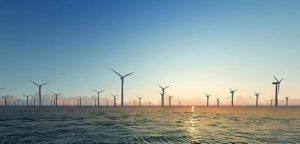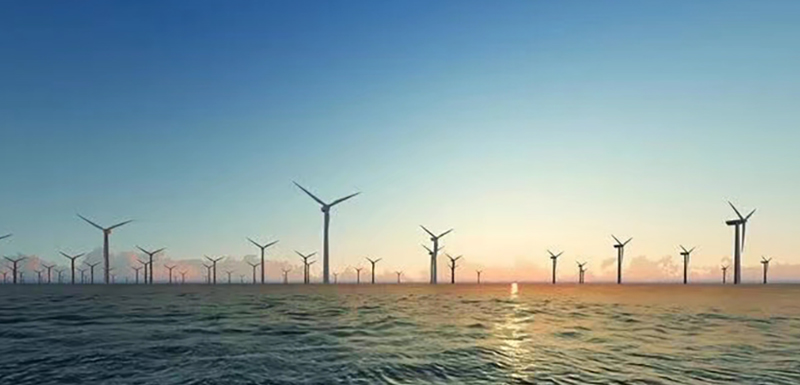The marine aquaculture sector has witnessed significant advancements from July to August 2025, spanning policy innovation, technological breakthroughs, ecological management, and international cooperation. Here are the key developments:
1. China’s Offshore Aquaculture High-Quality Development Conference Held
On July 3, 2025, the 2025 Offshore Aquaculture High-Quality Development Conference & Symposium on Innovation and Sustainable Development of Offshore Salmon Industry took place in Yantai, Shandong Province. Focusing on the upgrading of the entire salmon industry chain, the conference proposed a “Salmon 10,000-ton Plan,” aiming to build a world-leading integrated salmon production and sales base through initiatives such as constructing semi-submersible offshore aquaculture cages and solving technical challenges in salmon summer survival. As a frontier in China’s offshore aquaculture, Yantai has built 34 offshore aquaculture facilities with an annual fish production capacity of 15,000 tons, with salmon farming emerging as a core growth driver. During the conference, Yantai Jinghai Marine Fisheries Co., Ltd. obtained BAP international aquaculture certification, marking a crucial step in the standardization and internationalization of China’s seawater rainbow trout farming.
2. Breakthroughs in Typhoon Resistance of Offshore Cage Technology
The safe and efficient offshore cage aquaculture technology developed by the South China Sea Fisheries Research Institute of the Chinese Academy of Fishery Sciences released phased results on August 20, 2025. Through core innovations such as scientific site selection, typhoon-resistant design (gravity-type cages resistant to 14-15 level typhoons, truss-type cages resistant to 17 level typhoons), and intelligent management, the technology achieved a unit water production twice that of nearshore cages and a 20% increase in survival rate. Relying on this technology, the “Taishan-1” intelligent aquaculture cage platform in the offshore waters of Taishan, Guangdong successfully withstood the super typhoon “J 摩羯” in 2024 with a damage rate of less than 8%. Currently, the technology has been promoted in three provinces/municipalities in the South China Sea, supporting the establishment of over 10 demonstration bases, with aquaculture areas expanded to more than 20 kilometers offshore and waters deeper than 30 meters.
3. Global Aquaculture Production Forecasts and Regional Dynamics
A report released by Rabobank in January 2025 predicted that the global aquaculture industry will resume growth after facing challenges in 2024. Norway, a leader in salmon farming, is expected to see production growth of 2.2% and 5.3% in 2025 and 2026, reaching 1.56 million metric tons and 1.64 million metric tons respectively. Vietnam’s pangasius production is projected to grow by 8% in 2025, exceeding 2 million metric tons, maintaining its dominance in the global market. As a major tilapia-producing country, China is expected to achieve a 2.9% production growth in 2025, while offshore aquaculture in Guangdong, Hainan, and other regions is driving significant increases in marine fish output.
4. Upgrades in Environmental Management and Ecological Aquaculture Policies
- Shanwei’s Financial Support Policy for Modern Marine Ranching: The draft for comments released on August 22, 2025, proposes subsidies of up to 60,000 yuan per unit for offshore intelligent aquaculture equipment (such as gravity-type deep-water cages and truss-type cages) and establishes a special fund to support the “aquaculture carbon sink + ecological compensation” mechanism. The policy aims to promote the “fish-shellfish-algae symbiosis system,” with an expected annual carbon sequestration of 1,500 tons, facilitating marine carbon sink trading.
- Shandong Province Optimizes Aquaculture Sea Use Management: A notice issued in February 2025 requires strict control over new reclamation aquaculture, encourages the development of multi-trophic level integrated aquaculture, and provides land and funding support for offshore aquaculture facilities. The policy emphasizes the principle of “classified management and control,” requiring legal formalities supplementation or removal for existing aquaculture sea use, while promoting market-oriented transfer of aquaculture sea use rights.
- Comparison and Recommendations on Domestic and Foreign Effluent Discharge Standards: A research report released in August 2025 that China’s secondary standards for marine aquaculture effluent are more lenient than those in Europe and the United States in terms of suspended solids, nitrogen, phosphorus, and other indicators, recommending improved supervision through online monitoring and ecological treatment technologies. The European Union’s recently adopted “Wastewater Discharge Management Regulations” require member states to implement full-chain monitoring of aquaculture effluent, and China needs to accelerate alignment with international standards.
5. Environmental Incidents and Technical Responses
From late July to early August 2025, a red tide caused by Akashiwo sanguinea covering approximately 10 square kilometers occurred in the waters of Hui’an, Fujian Province. Although no aquatic product losses were reported, it raised concerns about ecological early warning. Quanzhou activated a level III emergency response for red tide disasters, reducing risks through tracking monitoring and public awareness campaigns. Meanwhile, the low-pollution ecological cage device developed by the Yangtze River Fisheries Research Institute of the Chinese Academy of Fishery Sciences obtained national invention patent authorization in February 2025. This device, featuring intelligent residual feed collection, precision feeding, and solar power supply, can reduce water pollution by over 70%, providing a solution to eutrophication.
6. International Cooperation and Cutting-Edge Research
- Algae Aquaculture Alternative Protein Breakthrough: In April 2025, a U.S. research team published results in Biotong, showing that using sodium acetate as a low-cost carbon source in mixotrophic cultivation increased chlorella protein production by 30%, laying the foundation for developing sustainable animal feed.
- AI-Driven Seaweed Aquaculture Revolution: In May 2025, the Sino-Swedish collaborative AI aquaculture system achieved an annual carbon sequestration of 12 tons per hectare for kelp in the Yellow Sea demonstration zone, while increasing aquaculture efficiency by 4 times. The system optimizes aquaculture density and light conditions through IoT sensors and machine learning. It is expected that the global algae industry scale will exceed $50 billion in 2025, with AI technology contributing over 35%.
Conclusion
The marine aquaculture sector from July to August 2025 has been characterized by “policy-driven, technology-led, and ecology-prioritized” development. China is accelerating breakthroughs in offshore equipment and carbon sink aquaculture, the international market is recovering in species such as salmon and pangasius, and environmental management and technological innovation have become global focal points. In the future, with the in-depth application of AI, gene editing, and other technologies, marine aquaculture will further transform towards intelligence and sustainability.

